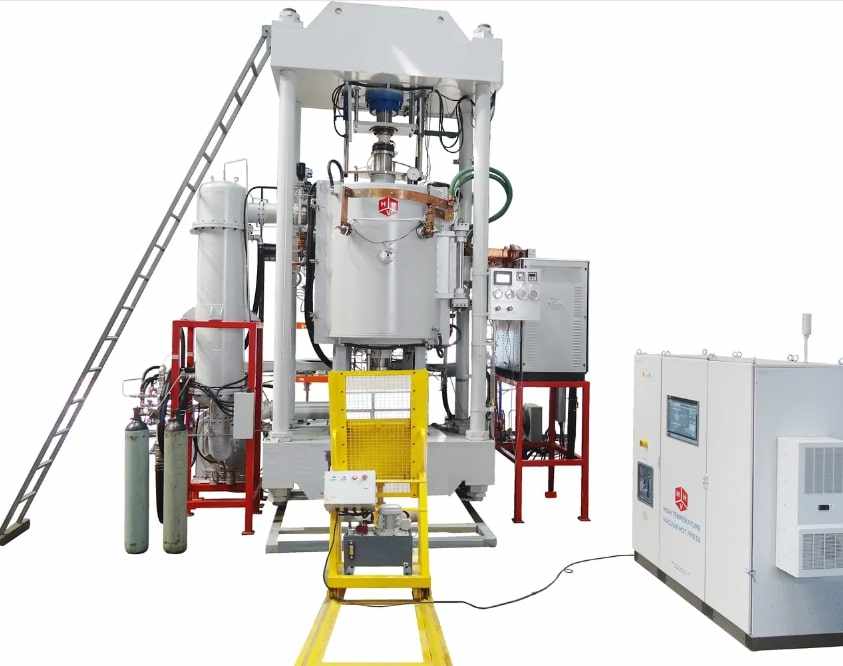Brazing is a critical process in the manufacturing of heat exchangers, aerospace components, and other high-performance assemblies where strength, precision, and cleanliness are essential. Among the various brazing techniques, aluminium brazing and vacuum brazing stand out for their ability to produce strong, corrosion-resistant joints with excellent thermal and electrical properties.
At the forefront of this technology is HHV Thermal Technologies, a trusted provider of high-performance brazing furnaces engineered for both industrial-scale production and research applications. In this article, we answer some of the most common and technical questions about aluminium and vacuum brazing furnaces, helping you better understand their operation, benefits, and suitability for your application.
Q1: What is aluminium brazing and why is it used?
A: Aluminium brazing is a process of joining aluminium components using a filler metal at a temperature below the melting point of the base material. It's widely used in automotive, HVAC, and aerospace industries because it creates strong, leak-proof joints without the need for mechanical fasteners or welding.
Q2: What is the role of a vacuum brazing furnace in this process?
A: A vacuum brazing furnace allows the brazing process to occur in a controlled, oxygen-free environment. This eliminates oxidation, ensures cleaner joints, and enhances the mechanical and thermal properties of the final product. HHV Thermal Technologies offers state-of-the-art vacuum brazing furnaces that deliver consistent results across complex assemblies.
Q3: Is there a difference between aluminium brazing in air and vacuum conditions?
A: Yes. In open-air aluminium brazing (typically using flux), there is a risk of oxidation which can affect joint quality. Vacuum aluminium brazing eliminates the need for flux, reduces contamination, and produces high-purity, strong joints—ideal for high-performance applications like automotive heat exchangers and aerospace parts.
Q4: What types of industries use vacuum brazing furnaces from HHV Thermal Technologies?
A: HHV furnaces are used across several industries, including automotive (for radiators and heat exchangers), aerospace (for lightweight structural components), medical devices, power generation, and defense. Their systems support both prototype development and mass production needs.
Q5: Are HHV’s brazing furnaces customizable?
A: Absolutely. HHV Thermal Technologies designs and manufactures fully customized brazing furnaces to meet specific customer requirements—whether it's chamber size, automation level, temperature control, or process integration.
Q6: How does vacuum brazing improve product performance?
A: Vacuum brazing produces stronger, cleaner joints with excellent thermal and electrical conductivity. It also reduces porosity and eliminates the risk of corrosion due to residual flux, which enhances long-term performance and reliability, especially in harsh environments.
Q7: What temperatures are typically used in aluminium brazing furnaces?
A: Aluminium brazing usually occurs between 580°C and 620°C, depending on the alloy and filler material. HHV Thermal Technologies’ furnaces are designed to maintain precise temperature uniformity across the entire load, ensuring optimal bonding and consistent product quality.
Q8: Can these furnaces handle complex or multi-part assemblies?
A: Yes. HHV’s aluminium and vacuum brazing furnaces are built to accommodate complex geometries and multi-component assemblies. The uniform heat distribution and controlled atmosphere make them ideal for producing intricate parts with high dimensional accuracy.
Q9: What kind of maintenance is required for a vacuum brazing furnace?
A: Routine maintenance includes checking vacuum pump performance, inspecting heating elements, cleaning the chamber to avoid contamination, and calibrating temperature control systems. HHV provides detailed maintenance support and training to ensure long-term reliability and efficiency.
Q10: How does HHV ensure temperature uniformity in its furnaces?
A: HHV Thermal Technologies uses advanced heating elements, thermal insulation, and multi-zone temperature controls to achieve exceptional uniformity throughout the heating chamber. This uniformity is crucial for consistent brazing quality, especially in mass production.
Q11: Are HHV brazing furnaces suitable for R&D and small-batch production?
A: Definitely. In addition to large-scale industrial models, HHV offers customized, compact furnaces tailored for research laboratories, universities, and prototype development centers. These systems provide the same high-performance brazing capabilities on a smaller scale.
Conclusion
Whether you're producing high-volume automotive heat exchangers or precision aerospace assemblies, selecting the right aluminium or vacuum brazing furnace is vital to achieving performance, efficiency, and reliability. HHV Thermal Technologies offers expertly engineered solutions that cater to a wide range of industries and application needs, with customization, temperature control, and vacuum integrity at the core of every system.
For more information, visit the website: https://hhvthermaltech.com/








Write a comment ...